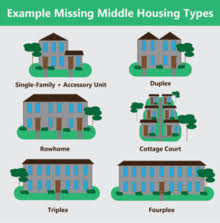
If you have an investment property, you may have heard that a 1031 exchange is a sophisticated strategy for tax deferral. This transaction can be a smart way to put more money into your investment properties and help with growth over time. Before implementing this strategy, it’s important to understand how a 1031 exchange can work for you to increase your real estate portfolio.
What Is a 1031 Exchange?
A 1031 exchange is a transaction connected with buying and selling real estate investment property. It gets its name from Section 1031 of the U.S. Internal Revenue Code. Someone who makes a 1031 exchange is swapping one investment property for another. This transaction is appealing because it allows you to defer capital gains taxes.
How Does a 1031 Exchange Work?
As with any transaction involving investment property, it’s best to follow the proper steps in the process. The first step is to ensure the property you’re selling and the property you want to buy are of like kind. Like-kind properties are similar in that they are both business or investment properties.
Select an Intermediary for the Transaction
The next step is to get an intermediary or agent to help with the exchange. An intermediary is responsible for holding the money from the investment property sale in escrow. This money will be used to purchase the other property in the exchange transaction.
The intermediary is responsible for other aspects of the 1031 transaction as well. This individual handles the documentation for both the property you’re selling and the property you’re buying in the exchange. Also, this person shares this documentation with the title company.
Qualities to consider when looking for a 1031 exchange intermediary:
- Experience with real estate
- Provides a way for you to monitor all exchange activities
- Arranges for an FDIC-insured account for the money
- Completes yearly compliance exams
Informing the IRS of Your 1031 Exchange
Your next step is to inform the IRS of your exchange. This is done on IRS Form 8824, which you attach to your tax return. The information you provide on this form conveys all aspects of the 1031 exchange.
This information includes:
- Description of the properties
- All monetary figures
- Others involved in the transaction
- Timeline of the transaction
Elements Involved In a 1031 Exchange
Property Sale
After selling your property, your intermediary takes possession of the money from the sale.
Consideration of Replacement Properties
You take a close look at the qualities of up to three pieces of property. After careful consideration, you choose one as your replacement property.
The 45-Day Mark
You must identify your choice of replacement property within 45 days of selling your initial property.
The 180-Day Mark
You must finalize the purchase of the replacement property within 180 days of selling your initial property.
What Are the Rules of a 1031 Exchange?
There are rules connected with making a 1031 exchange. These must be followed in order to reap the benefits of this transaction.
Value of the Replacement Property
The replacement property chosen for the exchange has to have an equal or greater value than the property sold.
The Three-Property Rule
You can designate up to three properties to consider for purchase in your 1031 exchange.
Investment Properties Only
Generally, a 1031 exchange doesn’t apply to residential properties; however, there are some exceptions. One example is a second home that you rent out. That home may qualify for a 1031 exchange depending on how long it has been occupied by tenants.
Limited to the United States
Another rule of a 1031 exchange is that both investment properties must be located in the United States.
What Happens to the Capital Gains Tax from the Investment Property Sale?
In a typical investment property sale, you would sell your property and then pay capital gains taxes on the sale. But doing a 1031 exchange means your capital gains taxes are deferred. You can invest the deferred capital gains tax money into your replacement property.
The Boot and the 1031 Exchange Process
Remember that the value of the replacement property must not be less than the value of your initial property. If the replacement property is worth less, then you have to pay capital gains taxes on the difference. That difference (monetary sum) is sometimes called the boot.
Fees Associated With a 1031 Exchange
Some fees associated with doing a 1031 exchange can be paid with exchange funds while others cannot. It’s important to be aware of these expenses so that they don’t add to the value of the transaction.
Exchange funds cannot cover fees for:
- Property taxes
- Repairs or maintenance
- Insurance
- Financing
It’s helpful to get the advice of a tax professional. This professional can tell you what fees are involved and how they can be paid.
What Are the Different Varieties of 1031 Exchanges?
As you may have guessed, there are a few types of 1031 exchanges. But that’s a good thing! Having a variety of options can help you achieve the specific goals you have in mind for your investment property.
A Delayed Exchange
This is the most typical type of 1031 exchange. After the sale of the initial property, you’re given a window of 180 days to purchase a replacement property. The opposite of a delayed exchange is a simultaneous exchange.
A simultaneous exchange is when you swap your investment property for another person’s investment property. The value of both properties must be the same. Simultaneous exchanges are a rarity because it’s difficult to find two properties of equal value.
A Reverse Exchange
Performing a reverse exchange means you close on your replacement property before closing on the sale of your initial property. An intermediary is necessary for a reverse exchange.
Why would someone choose a reverse exchange? A reverse exchange can come in handy if there are several other offers on the investment property you’re interested in. You can snatch up a great property without waiting to sell your own.
An Improvement Exchange
An improvement exchange is sometimes known as a built-to-suit exchange. This refers to the ability of the investor to use the deferred taxes for construction work on the replacement property.
The Pros and Cons of a 1031 Exchange
Of course, there are both pros and cons to doing a 1031 exchange. That’s why it is helpful to have professional investor support. One of the ways to determine what’s right for you is to consider both the pros and cons of the process.
The pros:
- Capital gains tax deferment
- Ability to put money toward an investment property
- Offers a step on your path to building wealth
The cons:
- Many rules are involved in the process=
- Time limit on finding a replacement property
- Must find an intermediary
Finally, a 1031 exchange is just one of the financial tools that can help you build wealth with your investment properties. Set up a consult today, and let our team of knowledgeable professionals help you to navigate the 1031 exchange process.




0 Comments